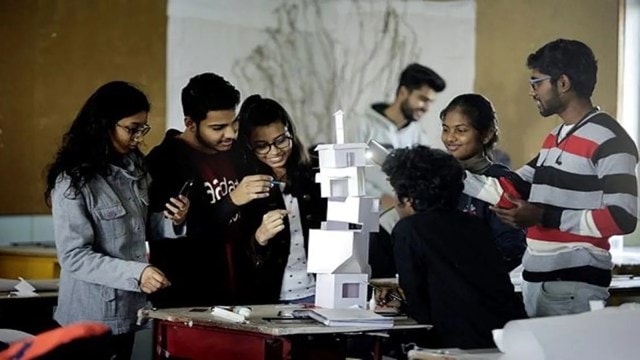
India today is at a pivotal point where, along with sustained economic growth, we must also harness our demographic dividend. This means empowering people with skills that ensure economic resilience and social inclusion. We must build a roadmap where every member of the workforce has the opportunity to develop useful occupational and vocational skills, upskill to improve the quality of their employment and reskill to utilise new tools for enhancing their competencies. This imperative is particularly relevant for rural India, where equitable access to sustainable livelihood opportunities is not only necessary for economic stability but also social integration.
The next two decades, leading into India at 100 and beyond, could be the most significant in the country’s growth trajectory. India is in a position to become the largest contributor to the global workforce. We must, therefore, focus on making the country a global hub for innovation, education, entrepreneurship, and high-quality skills.
The Budget exercise isn’t just about placing an account of revenue, expenditure and plans for taxes — ideally, it should also be a statement of intent and resolve. The Union Budget 2024 is a clarion call for an enabling policy framework and ecosystem for the country’s youth, who could become catalysts for a high economic growth trajectory. It has rightfully prioritised the Ministry of Skill Development and Entrepreneurship (MSDE), putting it at the forefront of enabling and empowering our youth. Key initiatives include a centrally sponsored scheme under the Prime Minister’s package that will skill 20 lakh youth over the next five years.
A substantial allocation has been made for Industrial Training Institutes (ITIs) for the next five years. Hundred ITIs are to be modernised through a hub-and-spoke model, supported by a total outlay of Rs 60,000 crore. This endeavour has been bolstered by a new centrally sponsored scheme, developed in collaboration with states and industry, to ensure that skilling outcomes meet high standards of quality and relevance — Rs 30,000 crore will come from the Centre, Rs 20,000 crore from state governments, and Rs 10,000 crore from industry contributions, including CSR funding. The capacity of five national institutes will be augmented with the aim of benefiting 20 lakh students, aligning ITI training with industry needs and creating a robust pathway for workforce development.
Another major change is the revision of the Model Skill Loan Scheme up to Rs 7.5 lakh, with a guarantee from a government-promoted fund, expected to benefit 25,000 students annually. This will help us lay greater emphasis on outcomes under our key focus areas, schemes, and initiatives which are set out below.
The Skill India Mission today supports all flagship schemes of the government, such as PM Kaushal Vikas Yojana (PMKVY), PM Vishwakarma, PM JANMAN Yojana, Lakhpati Didi, Solar Mission, Green Hydrogen Mission and AI for India. Since its inception in 2015, the Mission has equipped millions of young Indians with the skills needed to thrive in a rapidly evolving job market. As Skill India completes 10 years, it is imperative to reimagine the Skill 2.0 landscape and adopt a comprehensive approach to future developments. PMKVY is focused on short-term skill development training. It focuses on the rural youth and has trained over 1.49 crore candidates.
Apprenticeship training has emerged as a cornerstone of skill development and economic growth. Recognising its importance, the Centre has revised the Apprentices Act of 1961 to provide a more conducive training framework. More than 32 lakh youngsters are engaged as apprentices. Integrating apprenticeships into the educational system and linking them to higher education pathways is crucial. To make apprenticeships more attractive, the government shares stipend costs with establishments under the National Apprenticeship Promotion Scheme (NAPS) and has streamlined processes to expedite stipend reimbursements.
An exciting development in this respect is the launch, last year, of the Skill India Digital Hub (SIDH) — a platform for all skilling requirements. The portal has been envisaged as an information repository for all government initiatives related to skilling and entrepreneurship.
There are also plans to make India a global skills hub by equipping our institutions to meet international demands. Students in these institutions will receive financial support through skill vouchers and skill loans. We will also integrate skilling with general academic education, as per the recommendations of the National Education Policy.
India plans to use its demographic dividend to optimise its role in the global economic growth story. In the coming months, major initiatives will be rolled out to put skill development at the forefront of India’s growth trajectory. A multi-pronged approach that gives every working age Indian an opportunity to have higher quality and skill intensive employment will not only separate us from the rest of the world but will ensure that we lead the drive to being the world’s leading economy by 2047.
The writer is Union Minister of State (Independent Charge), Ministry of Skill Development and Entrepreneurship, Government of India. Views are personal



